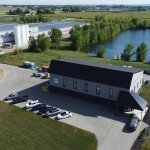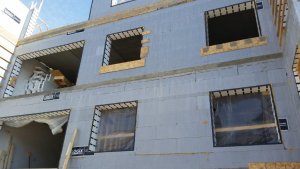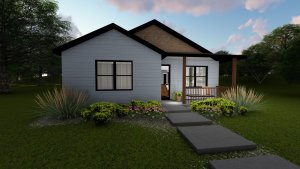In this post, we’ll see how one General Contractor was able to simplify a complex addition by pivoting the foundation design to Logix ICF. By changing the design to Logix ICF, the contractor saved time, money, and gave his client a high-performance, energy-efficient basement for their new addition. This project will actually be featured in an upcoming episode of This Old House, due to air in early 2022.
Win Peck, the Logix representative in New York, and Matt Whitbeck, the GC, both supplied crucial details that helped us write this post.
Logix ICF Foundation Case Study — Williams Family Home, New York State
Matt Whitbeck (Whitbeck Construction) is a General Contractor who’s dedicated to applying building science concepts to constructing better homes.
Through the grapevine, Matt heard that This Old House was looking for an interesting residential project to feature in the US North-East. He thought he had a project that was a perfect fit — a century-old house in New York State, which the Williamson family has owned for generations. Part of the renovation included removing the back portion of the home, and replacing it with a new 500ft2 addition, which would comprise apartments on the top and main floors, and a utility/storage space in the basement. The show’s production team was excited to feature Matt’s project.
Converting a Conventional Foundation to Logix ICF
The renovation’s original plans called for 10-inch, in-situ concrete foundation walls. But since it was a relatively small job, the project team knew they would have a hard time finding subtrades to perform it. Worse, the home’s configuration made site access a real challenge for setting up conventional formwork.
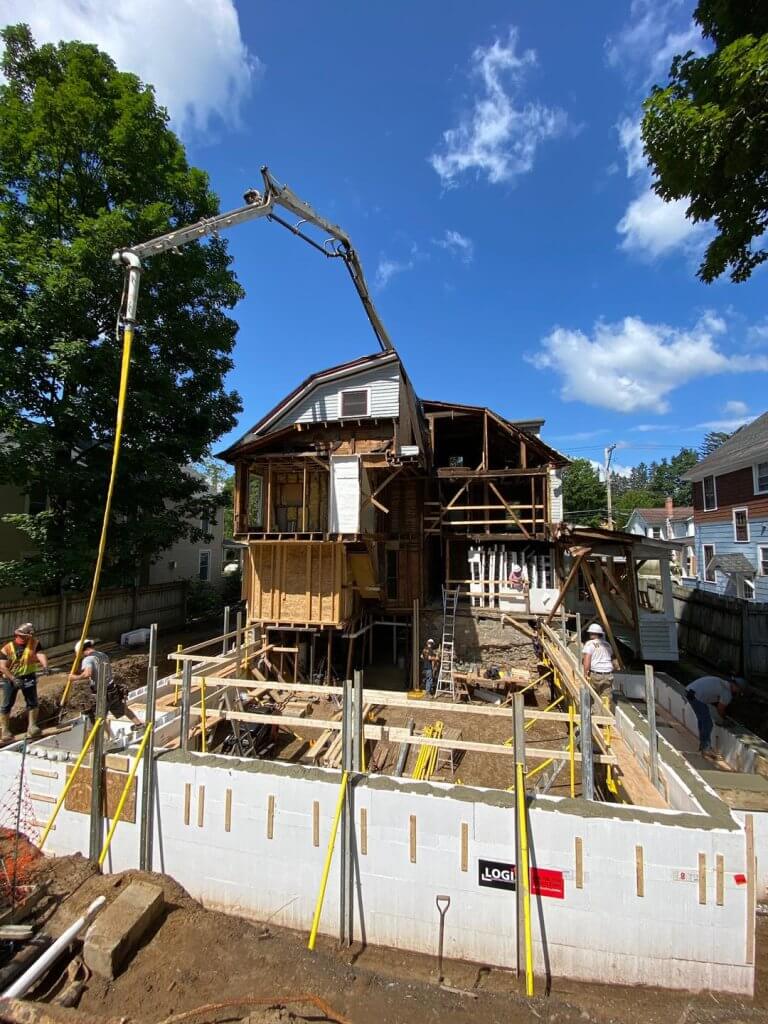
So, the team started thinking about converting the foundation to ICF instead. Matt has always looked for ways to boost remodeling projects with a thermal upgrade, so he immediately thought that Logix ICF would fit the bill. He also figured that the ICF would offer easy connection points to the existing wall, and the foundation would become a DIY-type job for which a 3-man crew would suffice.
On July 15th, Matt reached out to Win to get the process started, and sent engineering tables to the architect. The conversion process was surprisingly simple — even with respect to the building department, which quickly reviewed and approved the change they got from the architect.
Quick Construction and Great Adaptability
The Logix dealer, Curtis Lumber, shipped Matt the ICF blocks soon afterward, and construction got underway on July 23rd.
Matt found out that building the foundation wall with Logix ICF gave him great flexibility — all because Logix ICF blocks were so adaptable. The location of the footing and the existing main floor complicated the connection to the new wall, so he was happy that the ICF blocks could be easily configured to fit.
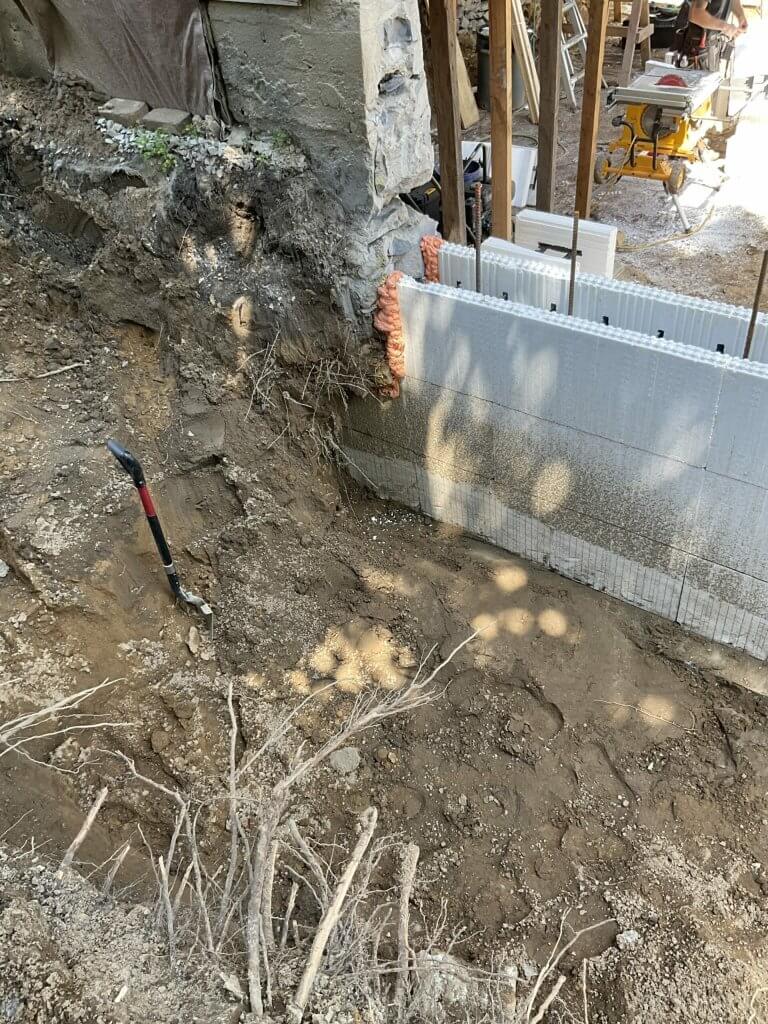
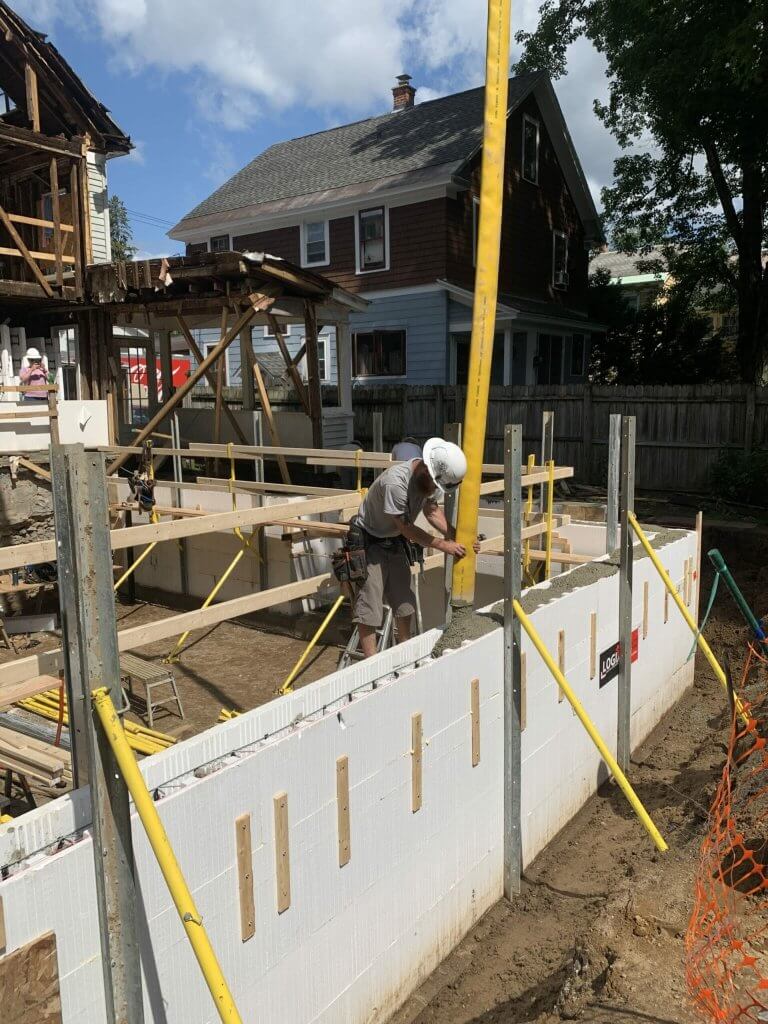
All Matt had to do was cut down the 2nd last course of the blocks to the required height (he left the last course intact to preserve the taper top).
By August 2nd, the concrete cores were poured — it took a crew of 3 just 5 business days to get the entire job done. Bracing the newly erected wall was straightforward, too; a single crew member got it done without additional help.
Wrapping It Up
The case study above shows us the multitude of advantages an ICF system like Logix can give us over traditional foundation construction methods.
By simply opting for Logix ICF to build his addition, Matt was able to:
- Perform the work in a tight access area
- Connect the new addition to a very old structure without much trouble
- Do it all with 3, non-specialized trades
- Get the job done in only 5 business days!
Crucially, pivoting from a conventional foundation design to Logix ICF proved to be a breeze — both the architect and the building official approved it without much trouble.
Let’s not forget, too, that the Willamson family now has a high-performance wall system enclosing their basement addition — one that’s bound to help them slash the costs of heating this new space.
The episode of This Old House featuring Matt’s project will air in winter of 2022 — so be sure to tune in to learn more!

